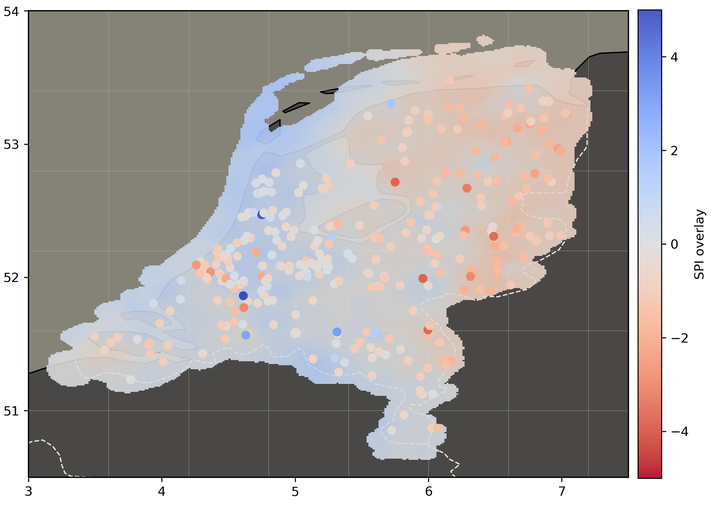Enhanced capability to monitor drought using citizen weather stations
 Overlay of official SPI vs SPI-WOW (Jun 2019)
Overlay of official SPI vs SPI-WOW (Jun 2019)Last week I presented some preliminary results of a project in a hydro-meteorology session of the European Geophysical Union (vEGU21) conference. In this project, we are assessing the value of citizen weather observations to monitor drought in here in the Netherlands (yes, it’s dry here too). I thought it would be nice to share these results and the idea of a “citizen science drought index” with a wider audience, so I recorded a voice-over-slides video that I am sharing here. Find some context below it!
A couple of years ago I participated in the [development of a drought monitor] (https://irenegarciamarti.com/post/developing-a-drought-monitor-prototype-for-the-netherlands/) for the Netherlands. During the development of that project I got acquainted with the increasing problem that drought is becoming in here, and I was glad I could learn from my colleagues about different indicators to monitor the severity of drought episodes. The selected indicator back then was the [Standard Precipitation Index (SPI)] (https://climatedataguide.ucar.edu/climate-data/standardized-precipitation-index-spi), which uses for the modelling daily accumulations of rainfall within a period (e.g. 30 days). This is on one hand.
On the other hand, at KNMI we also have available the weather observations collected by the WOW-NL network (wow.knmi.nl). These citizen weather stations (CWS) are mostly installed in private spaces (your back garden, a school playground) and keep taking weather measurements. The majority of them are equipped with a rain gauge, which enables getting the millimeters of rainfall per day, which is interesting because it also means you can calculate a rainfall accumulation, exactly the input required by the SPI.
Therefore, at some point we thought, what if we combine the citizen weather observations with the official drought model?. This is an interesting idea to explore because for regions around the globe which are far away from an official stations, this could provide some rough drought metrics that could be helpful to assess local drought conditions. The current preliminary results show some potential of CWS to provide approximated estimates of drought, but more research is required to achieve better SPI metrics.
Resources: